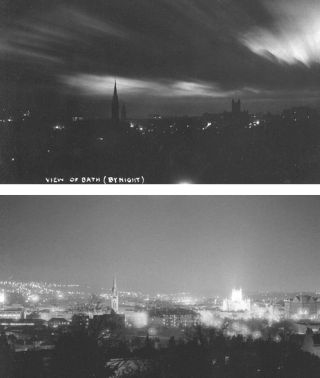I watched the weather closely all day yesterday, hoping that the evening would bring one thing, no cloud. Luckily I was pleased to see a warm, clear evening unfold before me. By 8pm I had my CG5 outside and pointing North ready for my first ever try at imaging a planet, the sun set and I waited very nervously for Polaris to appear so as to begin my alignment. Using my polar scope I carefully set up the already leveled mount and followed my same procedure for polar alignment, checked and re-checked then added my scope, and balanced, lastly putting on my home made dew shield.
I powered up the Goto and began 3-star alignment, this is where the trouble began for me, as for some reason my Goto had spat out all of it's PEC and tracking data, the scope slewed around totally incorrectly and my heart sank, I had crowed over Twitter about how I was imaging that night and it was going to be great, and now here I was, Goto giving me trouble and the most wonderfully clear, dark canopy above me.
I was relying on the Goto's tracking to give me the stability for my first go at imaging planets, my Celestron sat and looked at me blankly, as if to say, it's not my fault, I have not done this to annoy you!! Me and my Goto had never seen eye to eye, but we had an understanding, but tonight it was rebelling.
So what to do? well, resigned to the fact that I will not be having the best of times tonight with technology I swung my scope to Saturn and attached my Nikon D40 at prime focus and decided that I would see what happened.
The first thing that strikes you is of course that with just a T-ring and adapter in place, distant objects such as Saturn, do not appear very large in the viewfinder of the camera, this of course makes focussing a real issue, but I fired off several images to see how we got on, not well is the answer, the image was out of focus and because of the length of exposure (around 10secs) Saturn appeared as a nice white teardrop on the viewfinder, even Saturn was sad to see me.
But I persisted and I learnt very valuable lessons last night, the main one of being just how much I still don't know, but it also filled me with such inspiration to continue to try to get a good image. I simply wont be buying a CCD as the price goes beyond what is "Amateur" to me, but my Nikon D40 is a superb camera, and I don't doubt it's capabilities to produce the images I desire, my 6" Celestron Schmitt Cassegrain is also well up to the task. As with all things operator error is the failing.
It did make me appreciate the level of work that goes into producing the images we see in magazines and on the net, and also the sketches that people like
@Space_Jockey produce, the attention to detail is mind boggling, hopefully Space Jockey is planning a tutorial of his methods, you should check them out at his blog.
I'm off to read a little more, practice a little more and continue my absolute passion for Astronomy, and whether you rate the images or not I love them.
So get outside and give it a go, take a picture of the moon or stars, your recording an amazing world of beauty and violence as stars explode and are born, can you tell I like this yet?
Craig





